Opinion & Analysis
From the GolfWRX Vault: Municipal golf and its long term sustainability
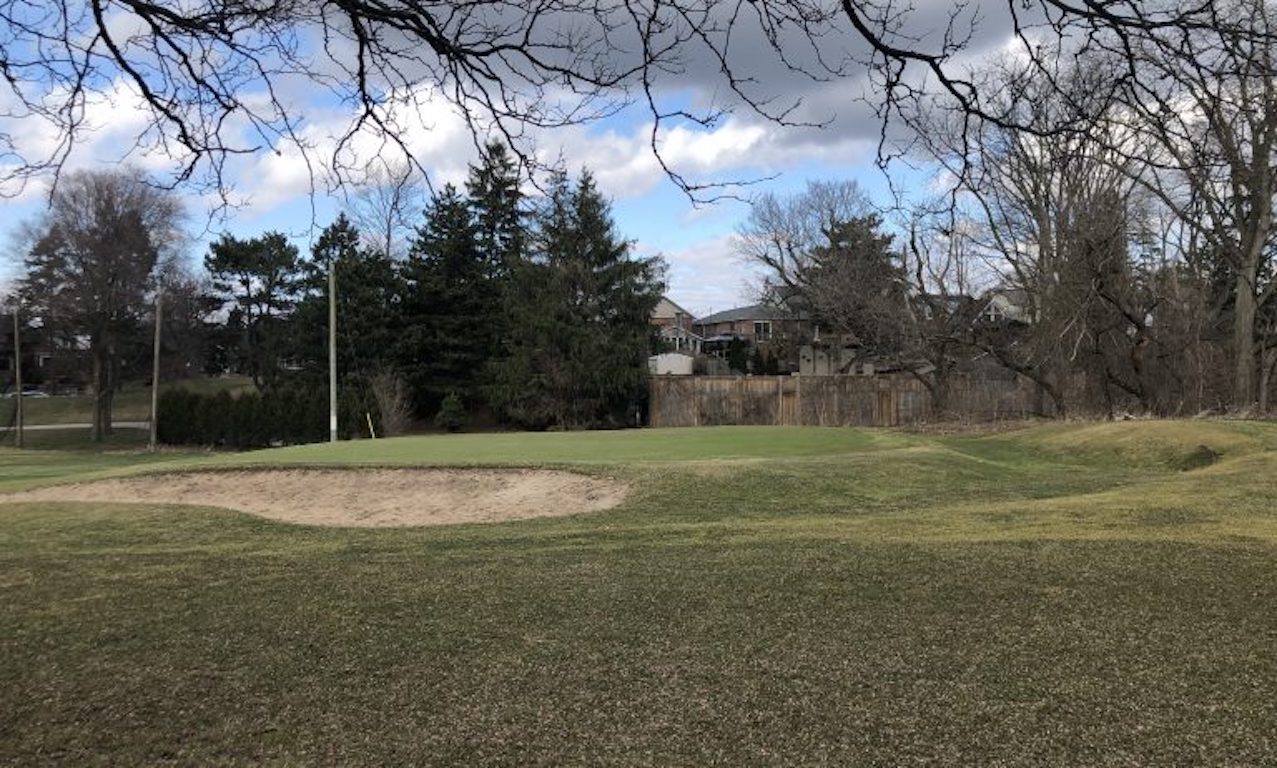
This piece was originally published in April 2019. Since then, the golf landscape, as well as participation numbers, have changed dramatically, and through this period of growth, the one thing that hasn’t changed is golf’s larger issues with access and affordability.
With a newfound focus on how to retain the many new golfers who have chosen to take up the game, municipal golf will have a huge roll to play, especially in larger urban centers where it can be more difficult to access golf facilities. We are republishing this piece as a way to continue to help promote municipal and affordable golf.
_______________________________________________________________
With another golf season quickly approaching, it’s time for many to consider the options for how and where they plan to play. Some have already started paying dues towards their club memberships, others are waiting to buy prepaid passes for their local course, and like many, I’m eagerly awaiting the opening of my local municipal golf course – my muni.
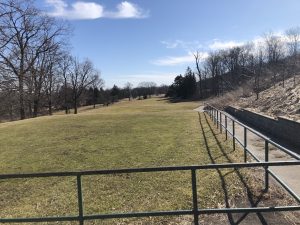
The gateway
Growing up, my friends and I were what you would call course rats: kids who would be there when the sun came up and there on the putting green as the sun went down. We would spend hours on the range, often times picking our own balls to avoid paying for another bucket since that meant an extra burger after we were burnt out from hitting balls. The golf course was the best “babysitter” our parents could have asked for – endless hours spent outside day after day and for the low price of just $350 for the season — plus $5 a day for that burger I was talking about. We all ended up loving the game and becoming pretty decent players along the way without much instruction, based on the simple truth that we were given the opportunity to play.
Living outside of the city in a smaller town, this was a “mom and pop” course that is still around today and busy, but I often wonder now as an adult if other kids that loved golf got to share in the same experience. Looking back, I don’t think I could have gotten a better education in being polite, responsible, honest, and confident, this was The First Tee before The First Tee even existed.
The memories from those summers are some of the fondest I have from growing up, and with so many young families living in cities, along with the high cost of organized sports, and the closing of golf courses, government-subsidized municipal golf is one of the last places where this type of opportunity is available to juniors and adults alike at an affordable price.

The modern muni dilemma
Municipal golf has been around for a long time, and recently for some cities, has become a lightning rod for budget cuts along with concerns about tax dollars being spent to fund an “elite” sport. The issue I have is cities spend a huge amount of money to subsidize other sports fields and recreation facilities including swimming pools, ice ricks, soccer and baseball fields yet none of these sports have the “elite” tag attached to them like golf.
This will sound like a blasphemous statement from a Canadian, but hockey, has become a much more elite and expensive sport as far as access and barrier to entry when you factor in equipment and cost of ice-time, yet a lot of non-hockey playing citizens would chain themselves to an arena to prevent it from closing its doors.
When recently, speaking to one of the golf professionals at a city-owned course near me, I was informed they are one of the few city recreational facilities that actually turn a profit thanks to the high traffic the course sees, along with the efficient use of the clubhouse facilities for events during the season, and in the offseason.
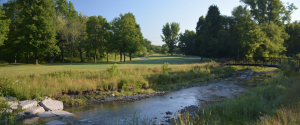
Municipal golf through history
What I love about “muni” golf is that it’s for the people. The Old Course along with the others in and around St Andrews Scotland, for example, are by definition public golf courses. The courses themselves and the “R & A Club” are separate entities, and if you can show a handicap card you can book a tee time to play one of the many courses located in the town.

The municipal courses I play the most are Kings Forest Golf Course and the Chedoke Civic Golf Courses in the city of Hamilton Ontario. The Chedoke courses are in no way a “Championship Test” with the shorter Martin Course topping out at just over 5,700 yards, but much like the Old Course at St. Andrews, it’s home to more than just golfers. Early morning and late afternoon you will find people strolling the paths, walking their dogs, and simply enjoying the green space — something that as cities continue to grow will be needed even more. It’s not closed on Sundays and doesn’t become a park like St Andrews, but even during winter, you will find dog walkers, cross country skiers, and people sledding down hills. That seems pretty multipurpose if you ask me.
As much as I pick on, and use my local Chedoke as my example, I do it out of love. The Martin course is an untouched Stanley Thompson design packed with interesting holes built into the Niagara Escarpment. It’s endless fun to play.
It’s about access
Municipal golf is accessible because it is affordable.
Understandably, the conditions might leave something to be desired on a day-to-day basis, but when a course only has 5-6 staff members on the grounds crew compared to more than a dozen like at high-end facilities, only so much can be done. At the end of the day, it’s 18 tees with 18 greens and the company you are with that makes a round of golf, not the height of the fairways or rough or the occasional bunker in need of a good raking.
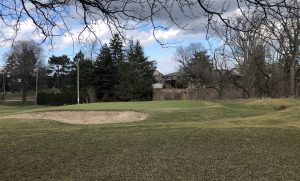
For myself locally, junior memberships are priced around $500, allowing access to unlimited golf with no tee time restrictions. It’s a pretty nice deal if you ask me. What makes golf different from other individual activities and team sports is it can be played at any time, and you can be paired up with three other random people to play, regardless of gender, age, or skill. When you add in the fact that at the recreational level, there is no scheduled practice or game days like other sports, golf offers seven days a week access, which can’t be said for other activities.
If we look at the bigger picture and data from the National Golf Foundation (2017), there are just over 11,000 PUBLIC golf facilities in the United States with the average price paid for an 18 hole round of golf averaging out to only $34. If the “average” golfer plays 10 times a year, that’s only $340, and with the buyers’ market in the used equipment space, even if you need a full set up of clubs to get started it can easily be had for less than $400.
I may be an outlier but if given the opportunity to volunteer at my course for a few hours once a week to help fix a bunker, clean up fallen branches, or just help with general course maintenance in exchange for the ability to golf I would be first to sign up.
It’s a program like this that could also work for juniors (within a reasonable age obviously) to not only help grant more access to golf but teach about agronomy and respect for the course itself. I can only imagine this type of “education” and team environment would help foster more life-long golfers. **Please remember this would be 100 percent voluntary and open to both kids and adults alike. I’m not asking or suggesting free hard labor.**
Looking towards the future
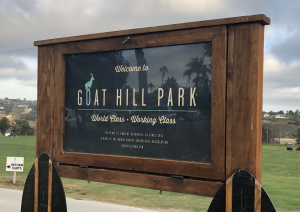
With so much worry around the future, there are recent examples of municipal and small privately-owned golf courses making big comebacks thanks to passionate individuals and cities willing to appreciate the value a golf course has to the community.
The best two examples are Goat Hill Park and the Winter Park 9 – I’ll let Andy Johnson from The Fried Egg give you the rundown: The Fried Egg Profiles Winter Park. Two courses on opposite sides of the country achieving success by offering affordably priced, fun golf to boot. It’s the sense of community these places created that make them beacons in the landscape.
At this point, I think it’s important to state that I am NOT anti-country club; I love private courses too! Conditions are top-notch, the architecture is in most cases interesting, the pace of play is quick, I could go on and on. I have friends that are members at clubs, and thanks to working in golf, I know a lot of pros that are happy to grant the occasional access on slower days to “friends in the industry”.
I love playing golf one way or the other, but at heart, I’m a muni kid that has a huge amount of respect for the game on both sides of the fence. Regardless of where someone started, or where you choose to play now, we’re all playing golf, and that’s the most important thing.
Sure the pros on T.V. play at high-end and expensive private courses, which is great for entertainment and corporate hospitality, but municipal golf where you are going to find the golfers who are the real heart and soul of the game. If we want to #GrowTheGame – an overused hollow phrase, and maintain some semblance of accessibility for the next generation of golfers, having municipal golf is a critical part of that.
- LIKE8
- LEGIT1
- WOW0
- LOL1
- IDHT0
- FLOP0
- OB0
- SHANK0
19th Hole
Vincenzi’s 2024 Zurich Classic of New Orleans betting preview

The PGA TOUR heads to New Orleans to play the 2023 Zurich Classic of New Orleans. In a welcome change from the usual stroke play, the Zurich Classic is a team event. On Thursday and Saturday, the teams play best ball, and on Friday and Sunday the teams play alternate shot.
TPC Louisiana is a par 72 that measures 7,425 yards. The course features some short par 4s and plenty of water and bunkers, which makes for a lot of exciting risk/reward scenarios for competitors. Pete Dye designed the course in 2004 specifically for the Zurich Classic, although the event didn’t make its debut until 2007 because of Hurricane Katrina.
Coming off of the Masters and a signature event in consecutive weeks, the field this week is a step down, and understandably so. Many of the world’s top players will be using this time to rest after a busy stretch.
However, there are some interesting teams this season with some stars making surprise appearances in the team event. Some notable teams include Patrick Cantlay and Xander Schauffele, Rory McIlroy and Shane Lowry, Collin Morikawa and Kurt Kitayama, Will Zalatoris and Sahith Theegala as well as a few Canadian teams, Nick Taylor and Adam Hadwin and Taylor Pendrith and Corey Conners.
Past Winners at TPC Louisiana
- 2023: Riley/Hardy (-30)
- 2022: Cantlay/Schauffele (-29)
- 2021: Leishman/Smith (-20)
- 2019: Palmer/Rahm (-26)
- 2018: Horschel/Piercy (-22)
- 2017: Blixt/Smith (-27)
2024 Zurich Classic of New Orleans Picks
Tom Hoge/Maverick McNealy +2500 (DraftKings)
Tom Hoge is coming off of a solid T18 finish at the RBC Heritage and finished T13 at last year’s Zurich Classic alongside Harris English.
This season, Hoge is having one of his best years on Tour in terms of Strokes Gained: Approach. In his last 24 rounds, the only player to top him on the category is Scottie Scheffler. Hoge has been solid on Pete Dye designs, ranking 28th in the field over his past 36 rounds.
McNealy is also having a solid season. He’s finished T6 at the Waste Management Phoenix Open and T9 at the PLAYERS Championship. He recently started working with world renowned swing coach, Butch Harmon, and its seemingly paid dividends in 2024.
Keith Mitchell/Joel Dahmen +4000 (DraftKings)
Keith Mitchell is having a fantastic season, finishing in the top-20 of five of his past seven starts on Tour. Most recently, Mitchell finished T14 at the Valero Texas Open and gained a whopping 6.0 strokes off the tee. He finished 6th at last year’s Zurich Classic.
Joel Dahmen is having a resurgent year and has been dialed in with his irons. He also has a T11 finish at the PLAYERS Championship at TPC Sawgrass which is another Pete Dye track. With Mitchell’s length and Dahmen’s ability to put it close with his short irons, the Mitchell/Dahmen combination will be dangerous this week.
Taylor Moore/Matt NeSmith +6500 (DraftKings)
Taylor Moore has quickly developed into one of the more consistent players on Tour. He’s finished in the top-20 in three of his past four starts, including a very impressive showing at The Masters, finishing T20. He’s also finished T4 at this event in consecutive seasons alongside Matt NeSmith.
NeSmith isn’t having a great 2024, but has seemed to elevate his game in this format. He finished T26 at Pete Dye’s TPC Sawgrass, which gives the 30-year-old something to build off of. NeSmith is also a great putter on Bermudagrass, which could help elevate Moore’s ball striking prowess.
- LIKE6
- LEGIT2
- WOW1
- LOL0
- IDHT0
- FLOP2
- OB1
- SHANK1
19th Hole
Vincenzi’s 2024 LIV Adelaide betting preview: Cam Smith ready for big week down under

After having four of the top twelve players on the leaderboard at The Masters, LIV Golf is set for their fifth event of the season: LIV Adelaide.
For both LIV fans and golf fans in Australia, LIV Adelaide is one of the most anticipated events of the year. With 35,000 people expected to attend each day of the tournament, the Grange Golf Club will be crawling with fans who are passionate about the sport of golf. The 12th hole, better known as “the watering hole”, is sure to have the rowdiest of the fans cheering after a long day of drinking some Leishman Lager.
The Grange Golf Club is a par-72 that measures 6,946 yards. The course features minimal resistance, as golfers went extremely low last season. In 2023, Talor Gooch shot consecutive rounds of 62 on Thursday and Friday, giving himself a gigantic cushion heading into championship Sunday. Things got tight for a while, but in the end, the Oklahoma State product was able to hold off The Crushers’ Anirban Lahiri for a three-shot victory.
The Four Aces won the team competition with the Range Goats finishing second.
*All Images Courtesy of LIV Golf*
Past Winners at LIV Adelaide
- 2023: Talor Gooch (-19)
Stat Leaders Through LIV Miami
Green in Regulation
- Richard Bland
- Jon Rahm
- Paul Casey
Fairways Hit
- Abraham Ancer
- Graeme McDowell
- Henrik Stenson
Driving Distance
- Bryson DeChambeau
- Joaquin Niemann
- Dean Burmester
Putting
- Cameron Smith
- Louis Oosthuizen
- Matt Jones
2024 LIV Adelaide Picks
Cameron Smith +1400 (DraftKings)
When I pulled up the odds for LIV Adelaide, I was more than a little surprised to see multiple golfers listed ahead of Cameron Smith on the betting board. A few starts ago, Cam finished runner-up at LIV Hong Kong, which is a golf course that absolutely suits his eye. Augusta National in another course that Smith could roll out of bed and finish in the top-ten at, and he did so two weeks ago at The Masters, finishing T6.
At Augusta, he gained strokes on the field on approach, off the tee (slightly), and of course, around the green and putting. Smith able to get in the mix at a major championship despite coming into the week feeling under the weather tells me that his game is once again rounding into form.
The Grange Golf Club is another course that undoubtedly suits the Australian. Smith is obviously incredibly comfortable playing in front of the Aussie faithful and has won three Australian PGA Championship’s. The course is very short and will allow Smith to play conservative off the tee, mitigating his most glaring weakness. With birdies available all over the golf course, there’s a chance the event turns into a putting contest, and there’s no one on the planet I’d rather have in one of those than Cam Smith.

Louis Oosthuizen +2200 (DraftKings)
Louis Oosthuizen has simply been one of the best players on LIV in the 2024 seas0n. The South African has finished in the top-10 on the LIV leaderboard in three of his five starts, with his best coming in Jeddah, where he finished T2. Perhaps more impressively, Oosthuizen finished T7 at LIV Miami, which took place at Doral’s “Blue Monster”, an absolutely massive golf course. Given that Louis is on the shorter side in terms of distance off the tee, his ability to play well in Miami shows how dialed he is with the irons this season.
In addition to the LIV finishes, Oosthuizen won back-to-back starts on the DP World Tour in December at the Alfred Dunhill Championship and the Mauritus Open. He also finished runner-up at the end of February in the International Series Oman. The 41-year-old has been one of the most consistent performers of 2024, regardless of tour.
For the season, Louis ranks 4th on LIV in birdies made, T9 in fairways hit and first in putting. He ranks 32nd in driving distance, but that won’t be an issue at this short course. Last season, he finished T11 at the event, but was in decent position going into the final round but fell back after shooting 70 while the rest of the field went low. This season, Oosthuizen comes into the event in peak form, and the course should be a perfect fit for his smooth swing and hot putter this week.

- LIKE10
- LEGIT3
- WOW0
- LOL1
- IDHT0
- FLOP1
- OB1
- SHANK1
Opinion & Analysis
The Wedge Guy: What really makes a wedge work? Part 1

Of all the clubs in our bags, wedges are almost always the simplest in construction and, therefore, the easiest to analyze what might make one work differently from another if you know what to look for.
Wedges are a lot less mysterious than drivers, of course, as the major brands are working with a lot of “pixie dust” inside these modern marvels. That’s carrying over more to irons now, with so many new models featuring internal multi-material technologies, and almost all of them having a “badge” or insert in the back to allow more complex graphics while hiding the actual distribution of mass.
But when it comes to wedges, most on the market today are still single pieces of molded steel, either cast or forged into that shape. So, if you look closely at where the mass is distributed, it’s pretty clear how that wedge is going to perform.
To start, because of their wider soles, the majority of the mass of almost any wedge is along the bottom third of the clubhead. So, the best wedge shots are always those hit between the 2nd and 5th grooves so that more mass is directly behind that impact. Elite tour professionals practice incessantly to learn to do that consistently, wearing out a spot about the size of a penny right there. If impact moves higher than that, the face is dramatically thinner, so smash factor is compromised significantly, which reduces the overall distance the ball will fly.
Every one of us, tour players included, knows that maddening shot that we feel a bit high on the face and it doesn’t go anywhere, it’s not your fault.
If your wedges show a wear pattern the size of a silver dollar, and centered above the 3rd or 4th groove, you are not getting anywhere near the same performance from shot to shot. Robot testing proves impact even two to three grooves higher in the face can cause distance loss of up to 35 to 55 feet with modern ‘tour design’ wedges.
In addition, as impact moves above the center of mass, the golf club principle of gear effect causes the ball to fly higher with less spin. Think of modern drivers for a minute. The “holy grail” of driving is high launch and low spin, and the driver engineers are pulling out all stops to get the mass as low in the clubhead as possible to optimize this combination.
Where is all the mass in your wedges? Low. So, disregarding the higher lofts, wedges “want” to launch the ball high with low spin – exactly the opposite of what good wedge play requires penetrating ball flight with high spin.
While almost all major brand wedges have begun putting a tiny bit more thickness in the top portion of the clubhead, conventional and modern ‘tour design’ wedges perform pretty much like they always have. Elite players learn to hit those crisp, spinny penetrating wedge shots by spending lots of practice time learning to consistently make contact low in the face.
So, what about grooves and face texture?
Grooves on any club can only do so much, and no one has any material advantage here. The USGA tightly defines what we manufacturers can do with grooves and face texture, and modern manufacturing techniques allow all of us to push those limits ever closer. And we all do. End of story.
Then there’s the topic of bounce and grinds, the most complex and confusing part of the wedge formula. Many top brands offer a complex array of sole configurations, all of them admittedly specialized to a particular kind of lie or turf conditions, and/or a particular divot pattern.
But if you don’t play the same turf all the time, and make the same size divot on every swing, how would you ever figure this out?
The only way is to take any wedge you are considering and play it a few rounds, hitting all the shots you face and observing the results. There’s simply no other way.
So, hopefully this will inspire a lively conversation in our comments section, and I’ll chime in to answer any questions you might have.
And next week, I’ll dive into the rest of the wedge formula. Yes, shafts, grips and specifications are essential, too.
- LIKE32
- LEGIT7
- WOW1
- LOL1
- IDHT2
- FLOP3
- OB1
- SHANK3
-

 19th Hole2 weeks ago
19th Hole2 weeks agoDave Portnoy places monstrous outright bet for the 2024 Masters
-

 19th Hole2 weeks ago
19th Hole2 weeks agoTiger Woods arrives at 2024 Masters equipped with a putter that may surprise you
-

 19th Hole21 hours ago
19th Hole21 hours ago‘Absolutely crazy’ – Major champ lays into Patrick Cantlay over his decision on final hole of RBC Heritage
-

 19th Hole3 weeks ago
19th Hole3 weeks agoReport: Tiger Woods has ‘eliminated sex’ in preparation for the 2024 Masters
-

 19th Hole1 week ago
19th Hole1 week agoTwo star names reportedly blanked Jon Rahm all week at the Masters
-

 19th Hole1 week ago
19th Hole1 week agoReport: LIV Golf identifies latest star name they hope to sign to breakaway tour
-

 19th Hole1 week ago
19th Hole1 week agoNeal Shipley presser ends in awkward fashion after reporter claims Tiger handed him note on 8th fairway
-

 19th Hole6 days ago
19th Hole6 days agoBrandel Chamblee has ‘no doubt’ who started the McIlroy/LIV rumor and why















Brandon
Oct 15, 2020 at 8:43 pm
Muni courses in the Bay Area are charging 80-100 bucks for a morning weekend tee times. For that price I’ll wait until 2 and go play Bayonet or Blackhorse. I love Muni courses, but they need to understand what they offer.
Alex
Oct 15, 2020 at 4:44 pm
Muni golf is awesome. A lot of great players cut their teeth on munis. It’s a great place to learn the game, especially if you grew up and parents couldn’t afford or didn’t want to be members anywhere. It’s also a great place for people that just get the itch to go play golf from time to time and want somewhere to simply play. It’s kind of golf’s purest form. The game can’t grow just on exclusive private courses, and if it does golf will keep the same negative persona. Muni golf is good for the game in all forms.
g daddy
Oct 15, 2020 at 1:39 pm
The public course in our hometown let the members of the high school golf team do just what you’re suggesting. Work one day a week for free golf for the rest of the week. It was really cool, except they gave us horrible jobs – I usually had to sweep the parking lot with a broom (please folks don’t clean off your golf shoes in the parking lot) and once I had to go around to greens and fix ball marks – except they didn’t have any usable/not broken ball mark fixer – so they have me a fork from the dining room, which destroyed my hand.
But it was a great learning experience and got me some free golf.